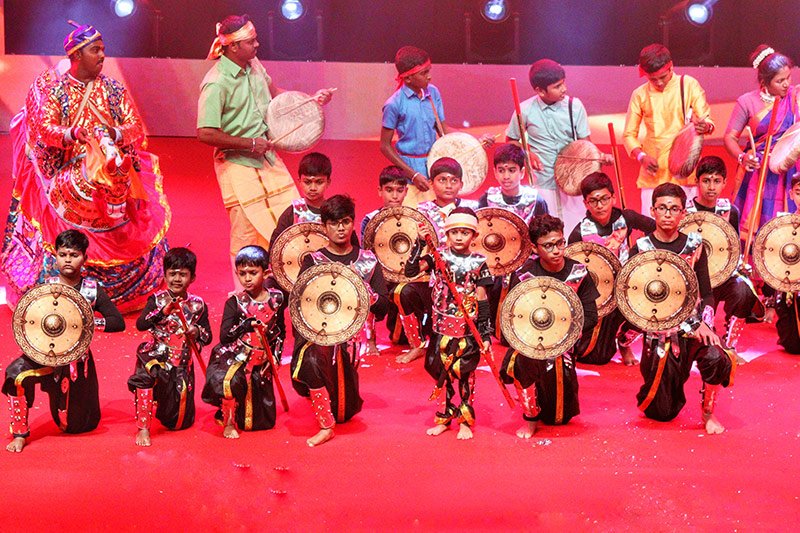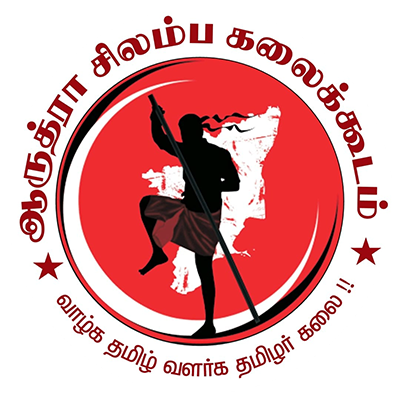Silambam, an ancient Indian martial art, has evolved over time, with the traditional and modern styles offering different approaches to practice and application. Here's a comparison of these two styles:
Traditional Style of Silambam:

1.Focus on Ancient Techniques:
- The traditional style places a strong emphasis on preserving the original techniques and forms passed down through generations.
- It involves intricate footwork, weapon handling, and traditional stances that are deeply connected to the culture and history of the region.
2. Comprehensive Training
- Traditional Silambam includes a wide range of weapons such as the staff (Silambam stick), swords, daggers, and even unarmed techniques.
- The training is more about building physical endurance, discipline, and spiritual strength, often with a focus on self-defense and the martial philosophy.
3. Use of Rituals and Philosophies:
- Traditional practices often involve rituals and an understanding of the martial art’s deeper philosophical roots, including the concept of mind-body harmony and meditation.
- Some schools of traditional Silambam emphasize holistic health, and the training often integrates breathing techniques, meditation, and yoga.
4. Structured and Systematic:
- The traditional style follows a fixed curriculum with a focus on mastering each step before moving to the next. It is methodical and slow, with a strong foundation in stances, basic movements, and precision.
5. Limited Use of Modern Equipment:
- The training mainly uses traditional weapons and tools like wooden staffs and sometimes bamboo sticks.
- Emphasis is placed on real-world combat scenarios.
Modern or Model Style of Silambam:

1. Adaptation to Contemporary Needs:
- Modern Silambam has adapted the traditional techniques to suit contemporary requirements, often focusing more on sports or competitive environments.
- The techniques are simplified to make learning faster and more accessible to a broader range of people, including those interested in fitness rather than martial combat.
2. Emphasis on Sport and Performance:
- The modern style often prioritizes agility, speed, and performance, with an emphasis on choreographed forms.
- Competitions are more structured and focus on scoring based on accuracy, speed, and technique rather than actual combat.
3. Incorporation of Modern Equipment:
- In some cases, modern equipment such as padded weapons, safety gear, and synthetic materials may be used in training and competitions.
- The use of training mats and protective gear is common in modern Silambam to ensure safety during intense sparring or performance.
4. Increased Focus on Fitness:
- The modern style is often taught as a fitness activity, with the martial aspect being secondary.
- There is more emphasis on improving flexibility, endurance, and strength rather than mastering combat skills in a traditional context.
5. Less Ritualistic:
- Modern schools may focus less on the cultural, spiritual, and ritualistic aspects that are inherent in the traditional practice.
- The learning environment is often more casual and open to different types of martial arts enthusiasts.
Key Differences Between Traditional and Modern Silambam:
Philosophy & Culture: Traditional Silambam is deeply connected with cultural rituals, spiritual aspects, and ancient philosophy, whereas the modern style may lack these elements, focusing more on physical training and sport.
Training Approach:Traditional Silambam is systematic, slow, and methodical, focusing on mastery of basic techniques before moving forward. Modern Silambam is faster-paced and may focus more on performance, fitness, or competition.
Use of Weapons:Traditional Silambam makes extensive use of a variety of ancient weapons, whereas modern Silambam may limit weapon training to a few types, often for sport purposes.
Applications: Traditional Silambam is more combat-oriented and designed for self-defense, while the modern style may focus more on physical fitness and sport, with less emphasis on real-world combat situations.
Both styles serve different purposes: traditional Silambam aims to preserve an ancient martial heritage, while modern Silambam focuses on making the martial art accessible, competitive, and practical for modern-day practitioners.
